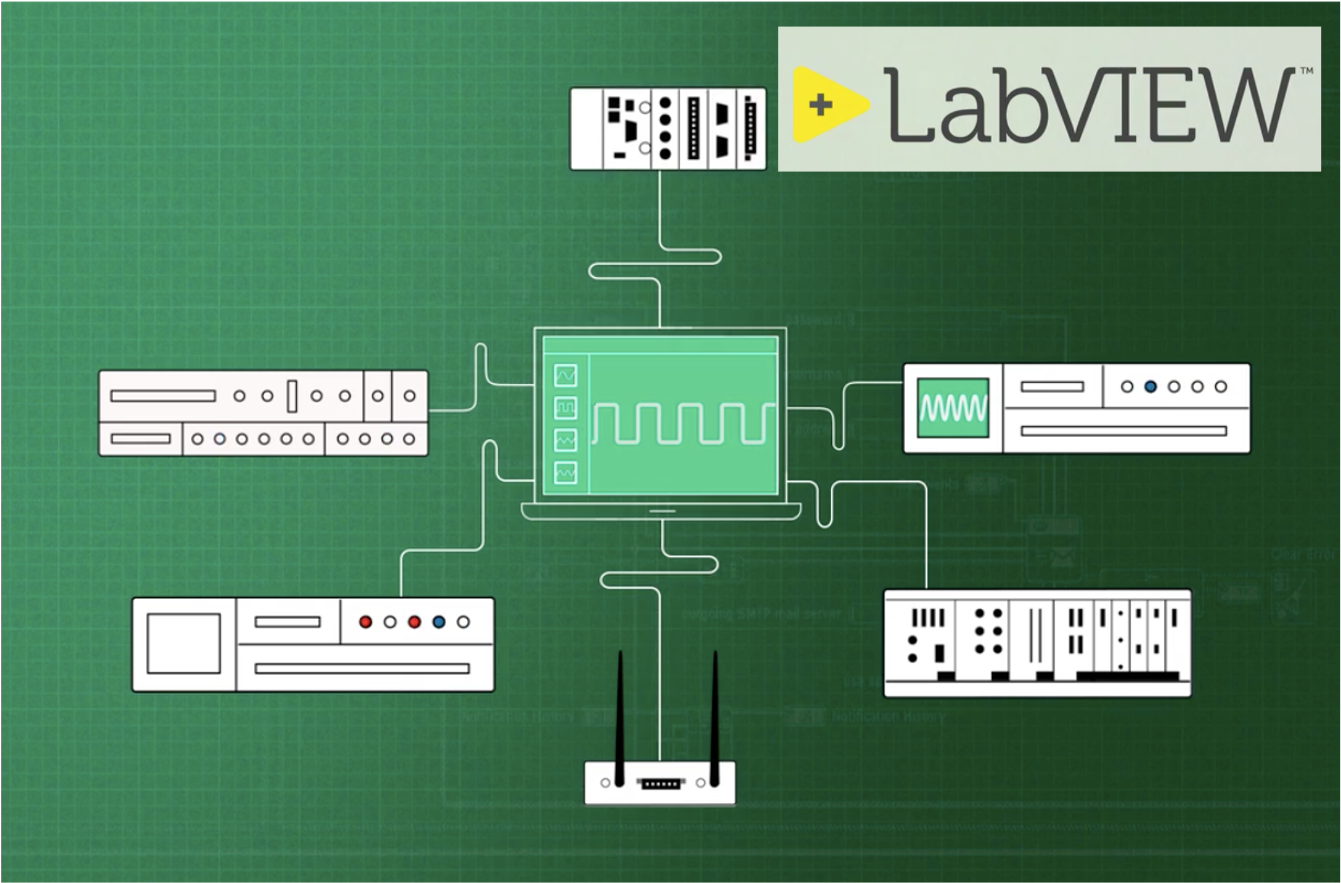
- A+
- A
- A-

Along with free access to platforms like COMSOL Multiphysics and MathWorks/MATLAB, I-STEM now provides academica with access to LabVIEW
Image credit: I-STEM website
Globally, for over three decades now, a certain platform has been a staple for engineers and scientists across industry, academia, and the community at large. LabVIEW, short for Laboratory Virtual Instrument Engineering Workbench, is a graphical programming platform for building automated research and test systems.
Originally developed by National Instruments (NI)—a company headquartered in Austin, Texas, USA—LabVIEW has thus far been a software for which a license needs to be procured at considerable expense, which limited its use in India. But now, a collaboration between NI and I-STEM (Indian Science Technology and Engineering facilities Map; an initiative by Indian Institute of Science Bangalore, supported by the PSA Office) has made it accessible to all Indian academics via a national license (at public expense).
LabVIEW on I-STEM
I-STEM is a portal that hosts R&D facilities in institutions across India and makes them accessible to researchers pan-India. At its launch in 2020 by the Hon’ble Prime Minister of India Shri Narendra Modi, it was envisioned as a dynamic and interactive platform that can provide support and facilities to needy researchers to strengthen the research and development ecosystem in the country and make it self-reliant. To date, I-STEM has procured national licenses and provided free access for academics to two widely used software platforms for R&D and learning: COSMOL Multiphysics and MathWorks/MATLAB. This—as Dr. Sanjeev Shrivastava, National Coordinator of I-STEM at IISc Bangalore, has noted—has benefited thousands of researchers nationwide. Now, to access LabVIEW, researchers need only to log in to the portal and register for the software.
Speaking at the event to mark the launch of LabVIEW on I-STEM, Prof. A. K. Sood, Principal Scientific Adviser to the Government of India, called it “another feather in the cap of I-STEM.” He noted the impact that the addition of this platform would have, remarking that it would be a great booster for collaborative research and innovation in the country’s R&D sector. He said, “…this is a big step. And the fact that it (LabVIEW) is also available to startup companies, especially in deep-tech innovation, can go a long way…”
The launch was followed by two technical presentations on LabVIEW by experts from NI, who talked about the support that their company is dedicated to providing to users of the platform. This would include online videos and other instructional material, along with need-based training sessions. The launch event was attended by participants from across the country.
What can researchers achieve with the newfound free access to LabVIEW?
In a nation that is seeing rapid technological progress and moving towards smart societies, the possibilities with LabVIEW are myriad. LabVIEW can be used to drive the automation of practically every instrument and data acquisition hardware. Moreover, it facilitates connectivity with other systems and protocols/tools (even in other languages!). This can considerably reduce the costs involved in setting up separate, hardware instrumentation, often expensive and complex, which in turn means that small academic labs and startups that do not have the necessary funds to set up the required hardware instrumentation, can instead use virtual instrumentation via LabVIEW.
Notably, LabVIEW uses a graphic interface that allows the user to easily create the required flow by joining various elements together, and it runs on Windows, OS X (Apple), and Linux operating systems, making it suitable for most computing systems.

LabVIEW has the precision, high performance, automation, and scalability to deliver on the measurement, validation, and prototyping needs of researchers
Image credit: National Instruments
In effect, LabVIEW can be used to build automated test systems for various kinds of analysis, measure physical systems with sensors, validate electronic and experimental designs, visualize potential outcomes, easily identify and fix errors in designs, and devise smart equipment, making it useful in fields ranging from package delivery to defense and everything in between.
What’s more, it can also help in teaching concepts to engineering students!
Considering that access to LabVIEW will be given not only to academicians but also to startups, Prof. Sood said at the launch event, “Deep-tech start-ups do need such high-end facilities, and I am sure with time, as more such startups set up in our country, this will have an [enormous] impact in the startup ecosystem.” Indeed, using LabVIEW can bring about minimal experimental errors, high throughputs in less time, more accurate and reproducible data, and even safer environments!
Ready and painless access to this platform can be a gamechanger in the Indian research ecosystem, enhancing scientific discoveries and innovations by leaps and bounds. Echoing this sentiment, Mr. Priyachandar, Country Head, Indirect Sales, at NI, India, said at the launch that the addition of LabVIEW to the I-STEM portal will “change the dynamics of the Indian research ecosystem.”
In short, this industry–academia collaboration is all set to have a powerful impact on science, technology, and innovation in India.
Neena Ratnakaran is a freelance science writer and editor.




